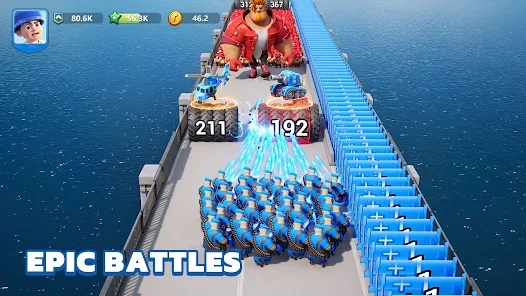Building Games vs. Life Simulation Games: Which Offers a More Engaging Experience?
When it comes to gaming, two genres often stand out for their ability to immerse players: building games and life simulation games. Both have their unique appeals, but which truly captures the heart and engages players more effectively? Let’s dive into the intricacies of each, exploring the mechanics, the experience, and the overall enjoyment they bring. And for those curious about the best story mode games for PC free, there’s plenty to unpack. So pour yourself a drink, get comfy, and let’s break it down.
What Are Building Games?
Building games, as the name suggests, focus on the art of construction and creativity. Players typically have a set of resources at their disposal and can design and create various structures or environments. Here are some common traits:
- Resource management
- Creative freedom
- Objective-based gameplay
- Multiplayer options in many titles
Popular Building Games Right Now
Some notable building games currently making waves include:
- Minecraft - A classic that’s all about block-building adventures.
- Terraria - Combines adventure with crafting and building.
- Factorio - Focused on automation and building efficient factories.
What Are Life Simulation Games?
Life simulation games offer players a window into virtual lives. Here, you can nurture characters, manage households, and sometimes even influence the world around you. Common features include:
- Character customization
- Open-ended gameplay
- Relationship building between characters
- Dynamic worlds that change based on player decisions
Top Life Simulation Games to Check Out
If life simulation piques your interest, here are a few must-plays:
- The Sims Series - Design homes and control characters’ lives.
- Animal Crossing - Manage a cute village while forming friendships with animal neighbors.
- Stardew Valley - A blend of farming and life simulation in a charming rural setting.
Comparing Gameplay Mechanics
| Aspect | Building Games | Life Simulation Games |
|---|---|---|
| Creativity | High - Emphasis on construction | Moderate - Character interactions and relationships |
| Objectives | Varied - Based on design and resource management | Open-ended - Based on player choices |
| Social Interaction | Often multiplayer | In-game character relationships |
Engagement Levels: Which Is More Captivating?
Engagement is a critical measure of any game’s success. Building games often attract players looking for creative challenges, where they can build intricate structures or thriving civilizations. Meanwhile, life simulation games cater to a different crowd, those who enjoy exploring relationships and crafting stories through the lives of their characters. The essence of engagement is influenced by:
- The variety of gameplay mechanics
- The emotional connection players build with their characters
- The challenge level and room for creativity
The Story Mode Element
One aspect that often enriches the gaming experience is the story mode. While building games typically revolve around open-world mechanics, some titles incorporate narrative elements beautifully. Nevertheless, life simulations often shine in their storytelling, creating rich narratives through character choices and interactions.
Mr. Potato Games: A Quirky Intersection
Have you ever tried Mr. Potato games? These quirky titles blend building and life simulation components. Players often engage in silly scenarios while managing potato characters in humorous settings. This approach allows for hilarious gameplay despite its simplicity.
Customization and Control
One of the delights in life simulation games is the freedom of customization. Players can design their characters, homes, and even cities. But does this mean players enjoy building games less? Not necessarily! Building games allow players to exert control through creativity, often resulting in more intricate and varied environments.
Community and Multiplayer Features
Another significant aspect is how these games leverage community engagement. Many building games offer extensive multiplayer features, letting players collaborate on projects or share their creations. Life simulation games, while often single-player focused, can also incorporate social aspects, especially online titles like Animal Crossing, where communities thrive.
Accessibility: Can Everyone Play?
Both genres strive to be accessible to a wide audience. Building games may cater to a more hardcore gaming crowd, but titles like Minecraft have bridged the gap for younger players. On the other hand, life simulation games often attract a diverse group due to their user-friendly interfaces and relatable narratives.
Learning Curves: Which Is Easier to Master?
Newcomers may find life simulation games easier to grasp. The narratives often guide players, while building games can require a deeper understanding of mechanics like resource management and optimization. Nonetheless, this also means building games can provide a sense of achievement once mastered, fostering skill development.
Conclusion: What Should You Play?
Ultimately, choosing between building games and life simulation games comes down to personal preference. Do you crave creative freedom and challenges, or are you drawn to narratives and character development? Each genre has something unique to offer. Whether you’re planning to construct those towering skyscrapers or raise a family in a whimsical town, the options are plentiful. Now, go and decide which world you want to dive into!



